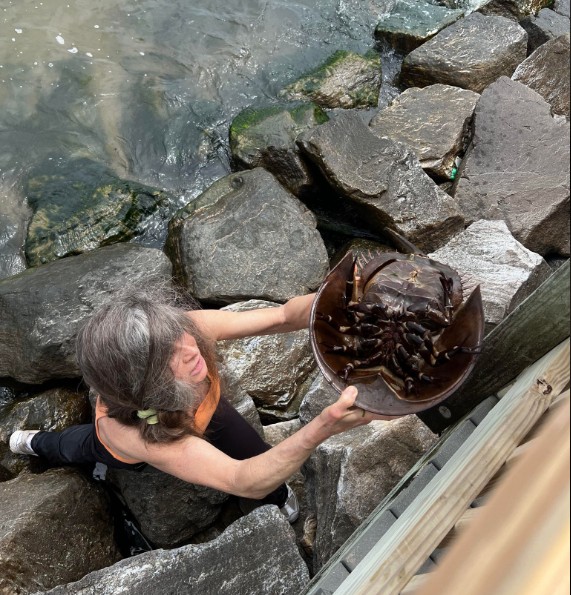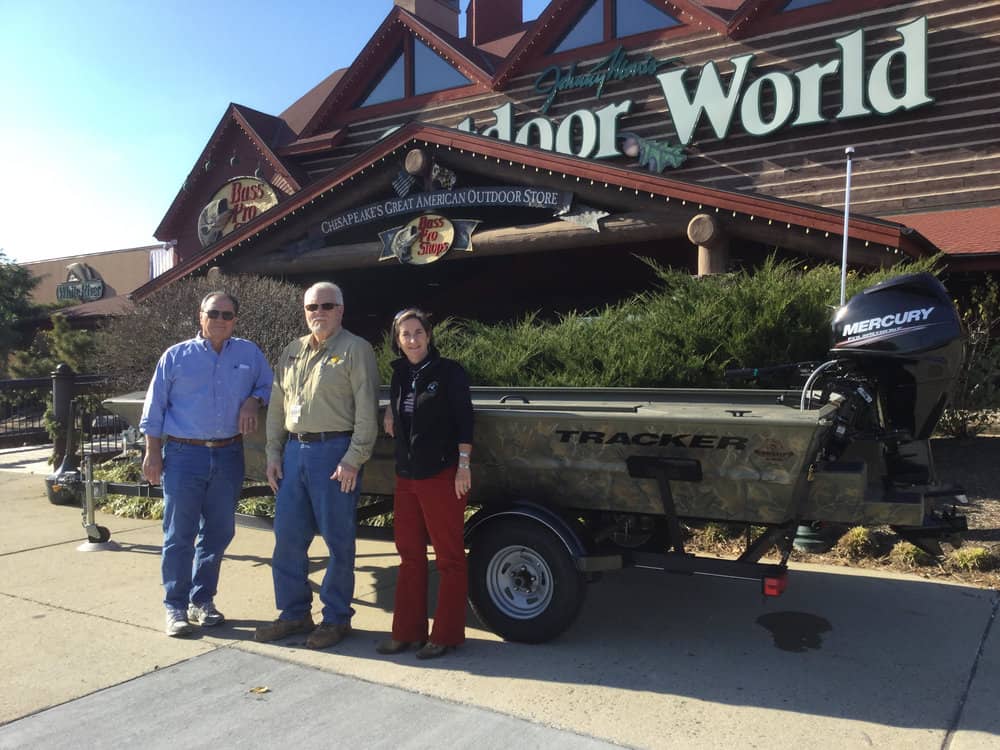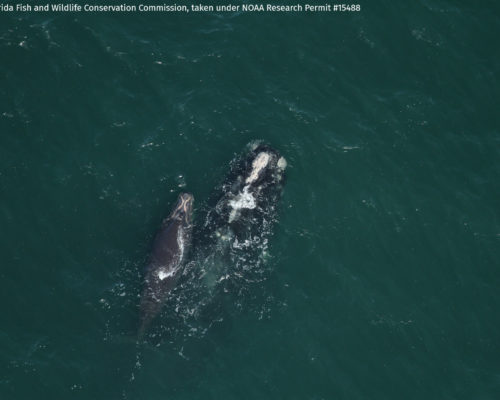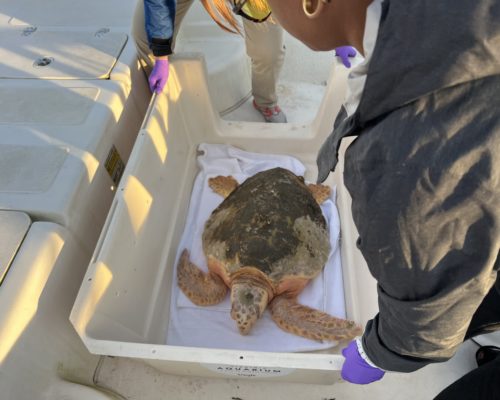It’s an astounding sign of the season: horseshoe crabs, rarely seen in the Chesapeake Bay most times of the year, appear en masse around each full and new moon in June to spawn. The timing of the peak season depends on late spring and early summer high tides.
In places like North Beach, Maryland, they can wash ashore and become stranded. A group of residents have appointed themselves horseshoe crab rescuers, devoting time and energy to saving the crabs by the hundreds. Longtime resident Bob Hellyer, affectionately known as Boardwalk Bob, is one of the crab rescuers.
“They live about 40 years,” he says, “And it’s believed they return to the same area to mate and lay eggs every year, but more research is needed to confirm that.”
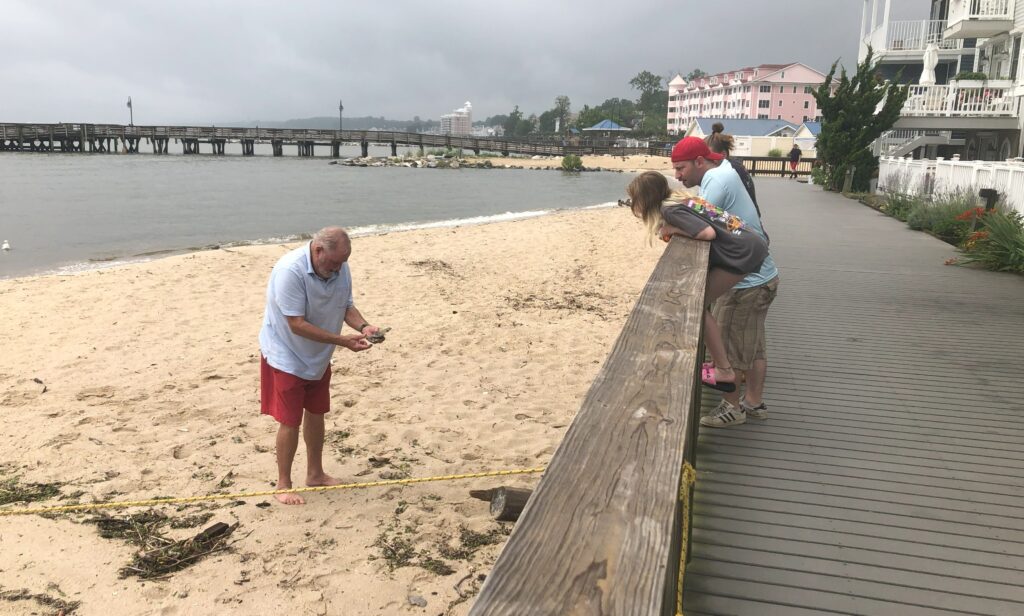
During these annual trips onto the land, many crabs get stranded on their backs and unable to right themselves without human intervention. Using the Ecological Research & Development Group’s “Just Flip ‘em” technique, Hellyer and others have been teaching beach-goers to assist crabs with a quick and gentle flip. (Note: never pick up a horseshoe crab by its tail, as that can hurt the animal.)
“Bob has done a great job leading the effort,” says Lisa Garrett, Community Conservation Outreach Coordinator for the Town of North Beach, who has also been involved over the years.
According to Garrett, waves that toss crabs onto their backs are not the only threat. Riprap, large boulders strategically placed along the shoreline to prevent erosion, present a different kind of danger to marine life.
“Horseshoe crabs only come ashore between the full moon in May and the full moon in June. During that time, many of them get washed into the spaces under and between the rocks. They get trapped and die,” she explains.
Garrett says riprap presents a danger for horseshoe crabs all along the east coast and their dwindling population has created a crisis for other wildlife, especially migratory birds that rely on the crab eggs for sustenance.
“They call it green caviar [for some birds] because it is so nutrient rich,” she says. “Red knots, for example, have one of the longest migratory patterns, traveling over 7,000 miles every year. They are heavily dependent on horseshoe crab eggs.”
The crabs are also valued for their copper-rich blue blood, which has been used in the COVID-19 vaccine and almost all other vaccines to prevent contamination. So they’re a valuable target for the fishing industry off Maryland and Delaware coasts.
The horseshoe crab, unchanged for over 300 million years, is a source of endless fascination for beachgoers.
Just ask middle school student Audrey Sown who resides in Schererville, Indiana, but is vacationing with her family in North Beach, Maryland. From the boardwalk, she calls to Hellyer, a long-time resident, “Will you get me a horseshoe shell?”
He obliges by handing her a small empty shell—and then another and another. He holds up a large, dead horseshoe crab still intact. “They aren’t actually crabs,” he tells her, “They are members of the spider family.”
With the 2023 horseshoe crab breeding season soon ending, Chesapeake Bay residents are looking for more solid solutions in the future.
“Cathy and Larry Foutz and others and I have been reaching in and fishing them out by hand,” Hellyer says pointing to the riprap nearest his home. In North Beach alone, volunteers have freed over 600 trapped crabs this year.
Garrett believes the answer lies in the construction of an inexpensive, removable barrier made of fine silk mesh. The water-permeable netting would direct the crabs away from the riprap and towards the sand. She’s optimistic about having this solution in place in time for the 2024 spawning season.
“The mayor is supportive,” Garrett says of Mike Benton, a former Town Council Member who was elected mayor in 2018. “He’s very interested in the horseshoe crabs and has participated in rescuing them.”
Garrett would also like to see more citizen participation. “We don’t have an official Horseshoe Crab Rescue Club. We are more like horseshoe crab ‘fans’ who do what we can to help, and I’d welcome more volunteers,” she says. Horseshoe Crab “Fans” can reach her at lgarrett@northbeachmd.org
-Susan Nolan

